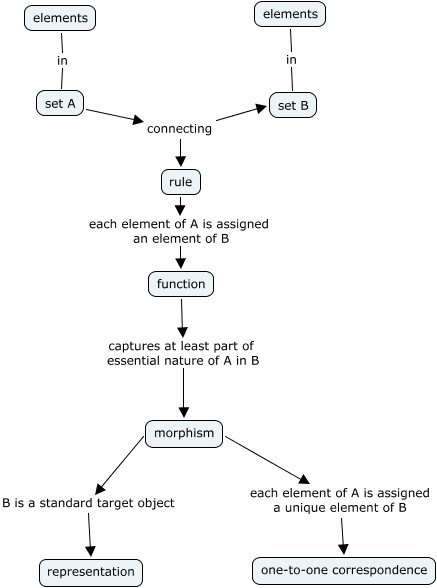
Home
Journals 2008
Year to Date
January
February
March
April
May
June
July
August
September
October
November
December
Time Tables 2008
Year to Date
January
February
March
April
May
June
July
August
September
October
November
December

Year to Date
January
February
March
April
May
June
July
August
September
October
November
December
Year to Date
January
February
March
April
May
June
July
August
September
October
November
December
This page last updated on: Thursday, May 8, 2008 5:09 AM
It is +2 C with a high forecast of +12 C. Sunrise 5:58 Sunset 20:58 Hours of daylight: 15:00
I am feeling much stronger this morning. Ready and rarin' to go.
First a nice cup of coffee. It is too cool and damp for any serious yard work. But I might have a look at a couple of boxes of professional reprints and reports and see if they can be culled and organized. More appealing is to have a close look at three math books on group theory and symmetry that I now have in my possession.
| Learning Category | Planned Activities for Today | Time |
|---|---|---|
| Literature | Begin morning with a Rumi reading | |
| Literature | Continue reading "The Interpretation of Murder" by Jed Rubenfeld | 1 hr |
| Mathematics | Make notes on symmetry - 9 | 3 hr |
Here is my chart of symmetry readings: Each cell will corresponds to a chapter. Yellow indicates the number of chapters in the book, green indicates that I have read and made notes on the chapter. The background colors of the book titles are purple for mathematics books where one actually does the mathematics and light blue indicated books that describe what others have done. In an ideal world on each day I should be able to add at least one cell to what I have read.
|
I want to try a slightly different approach to this set of notes. The idea is to provide a story that describes my efforts at Learning about symmetry and group theory.
The above table indicates the resources that I have at my disposal. Some of the books describe what mathematicians have learned about this topic but do not give a sense of the actual mathematics that are involved. The books with a purple background are more like textbooks that attempt to have the reader develop skills for future use. That is my goal.
Because of the difficulties of incorporating the various notational conventions onto this web site, my efforts will consist of a blend of web-based activities and hand-written notes (which will be scanned and inserted in these web pages).
I have scanned the first chapter of each of the five "purple" books and have decided to begin with the first chapter of Fearless Symmetry.
This begins with a number of basic definitions and ideas that will be used on on almost daily basis. What are these basic ideas?
I keep reminding myself that these notes are not the important product. The important product is my mental understanding of these terms, how they are related, and how they may be utilized to answer certain types of questions and to generate new ideas. Thus these notes my be viewed as a representation of my mental structure.
Usually, within mathematics, the standard target object is some form of mathematical structure that we already know quite a bit about. The motivation behind forming a representation is that we may then use this knowledge of the target object to infer some additional properties of the source object.
I want to try to create a few more details of this standard target object (i.e. these notes) and then see if that helps me understand the five ideas mention above.
Here is my first attempt at using a software package called Cmap to create a concept map for the five ideas in this chapter:

A morphism is a special type of function that captures some essential feature of A in its image in B and a representation is a special type of morphism that uses a standard target object for B. Then since we know quite a bit about B, this allows us to make some additional comments about the nature of A. I have also learned two new ideas and their associated names: morphism and representation.
There is nothing difficult with the ideas presented in this chapter. I am delighted with this type of beginning where I can focus on understanding the nature of the key terms and concepts at the outset and then burrow in to learn some techniques that involve these ideas. I also like the idea of having a synopsis of each chapter at the beginning. This gives me an initial framework for appreciating what I am reading. I also like the idea of a summary of the key points at the end of the chapter. It does take a while to become familiar with a new software package. I am not yet convinced that the cognitive map is worthwhile (at least in its present form). |
| Keep in mind that a set is simply a collection of elements. A group is a set with additional properties. |
| The label SO(3) seems a bit cumbersome. But it does introduce me to the type of labels I might expect in the future. |
Definition: A Group G is a set with a composition defined on pairs of elements , as long as three axioms hold true:
1. There is a neutral element e in G, so that x o e = e o x = x
no matter what element of the group is substituted for x.2. For any element x of G, there is some element y in G so that x o y = y o x = e . ( y is called the inverse of x ).
3. For any three elements x, y, and z in G, we have (x o y) o z = x o (y o z). (This is called the associative law).
Definition: If G is a group, the group law is the rule that tells how to combine two elements in the group to get the third.
| This is another simple chapter. One new idea is described - the general concept of a group, and its mathematical definition is given. Two main types of group are mentioned: continuous (Lie) and discrete. |
Tags: mathematics, function, morphism, representation, group
Books on the Go Today |
|
 |
 |
 |
 |